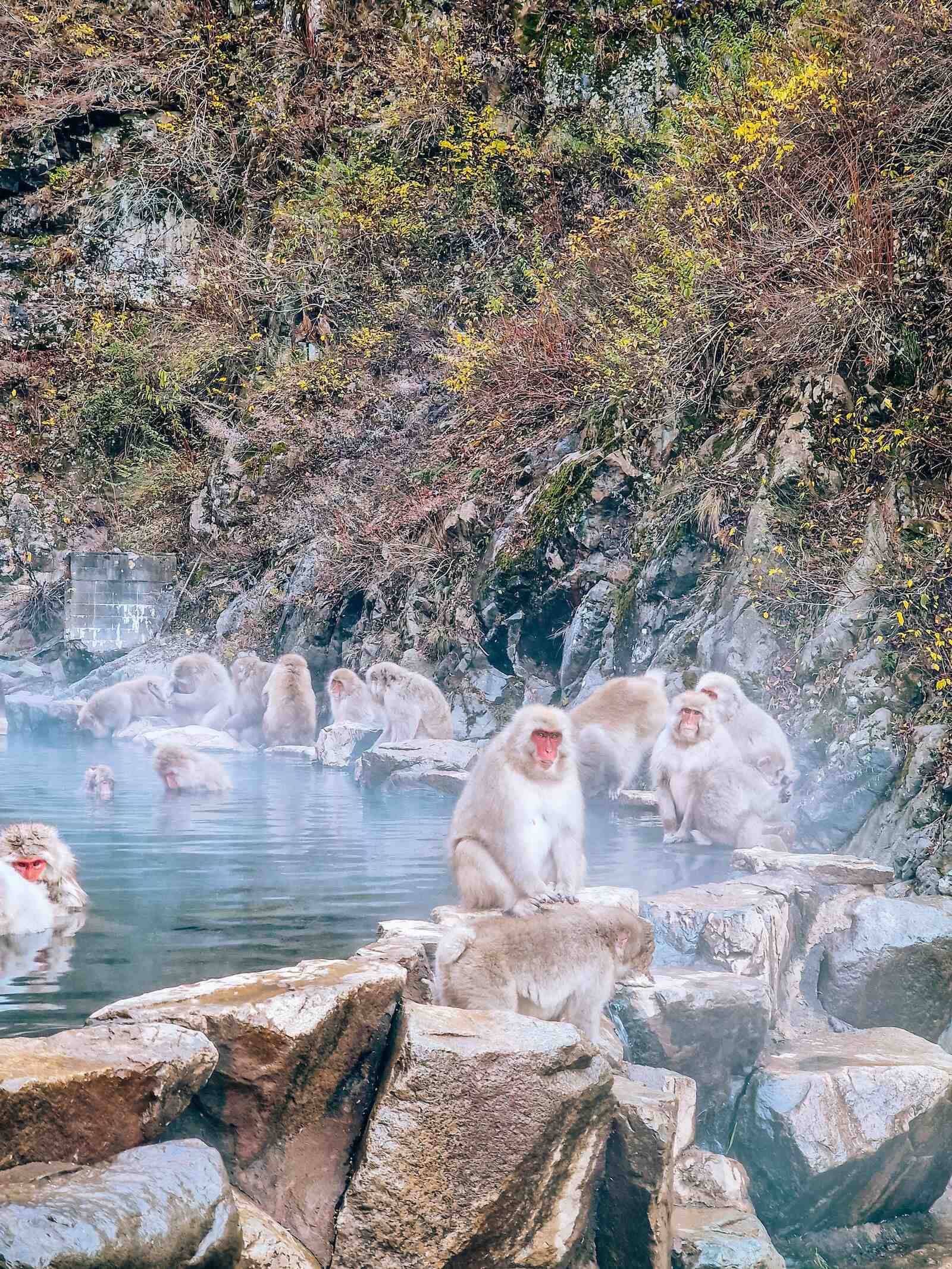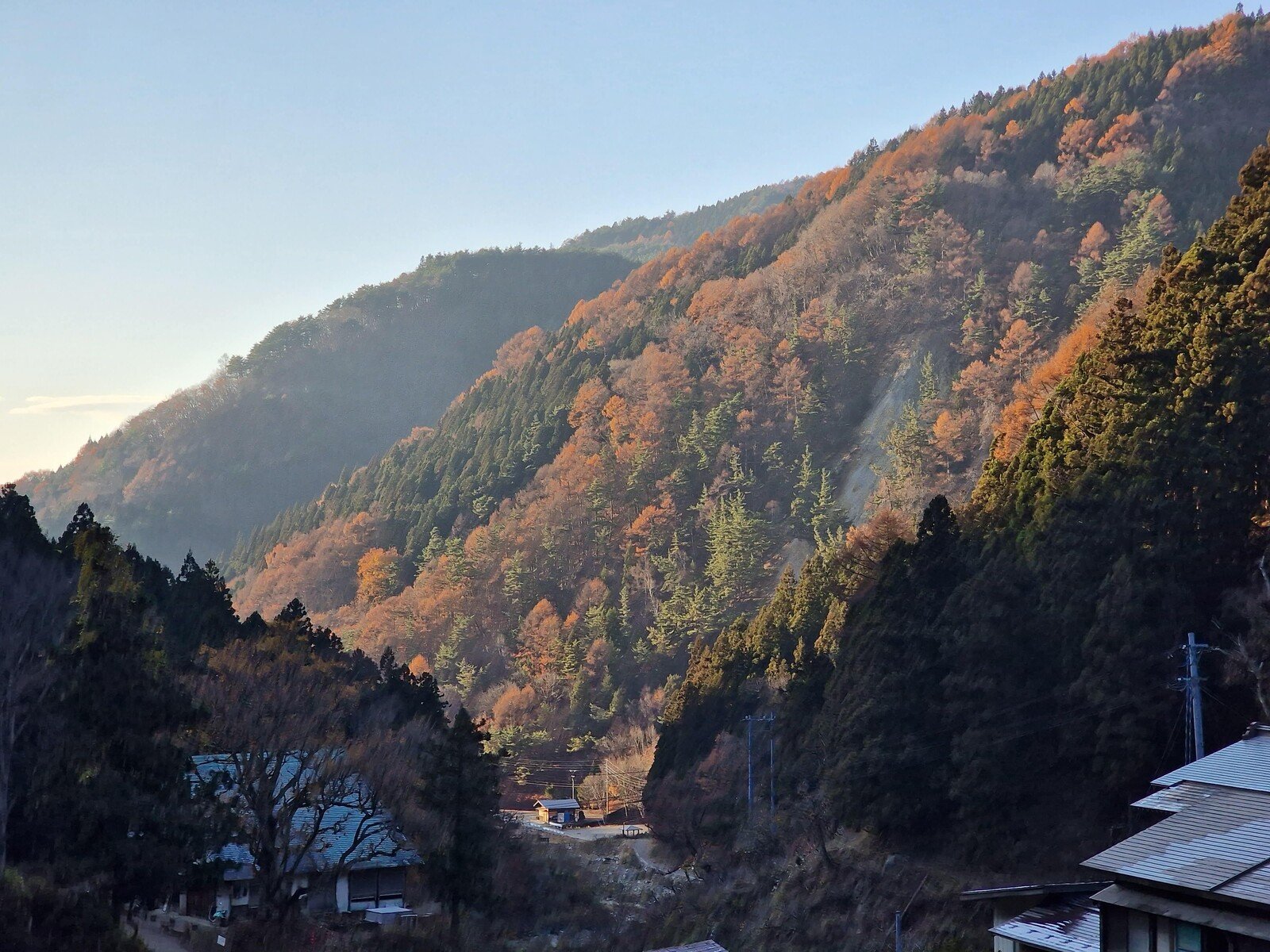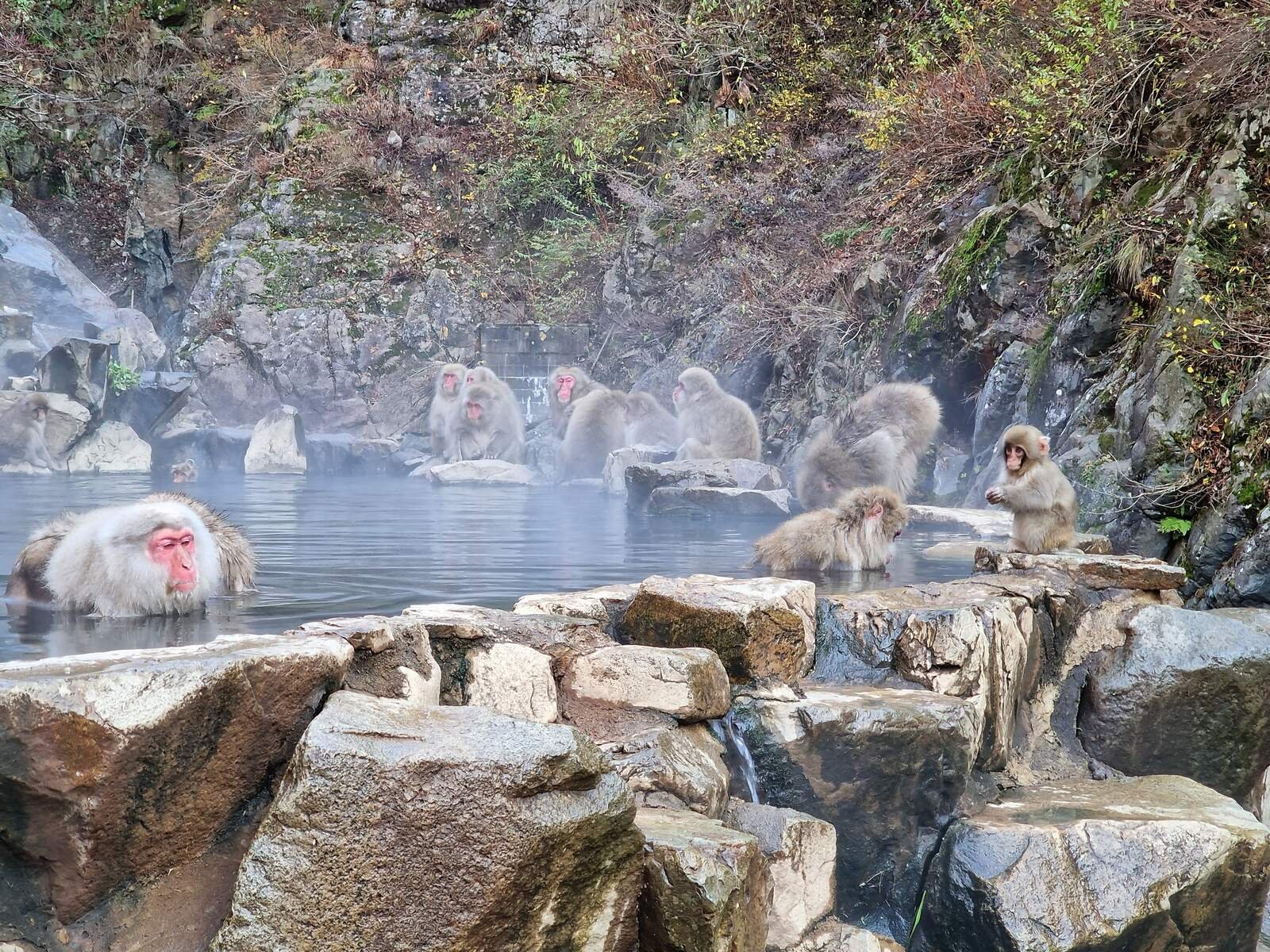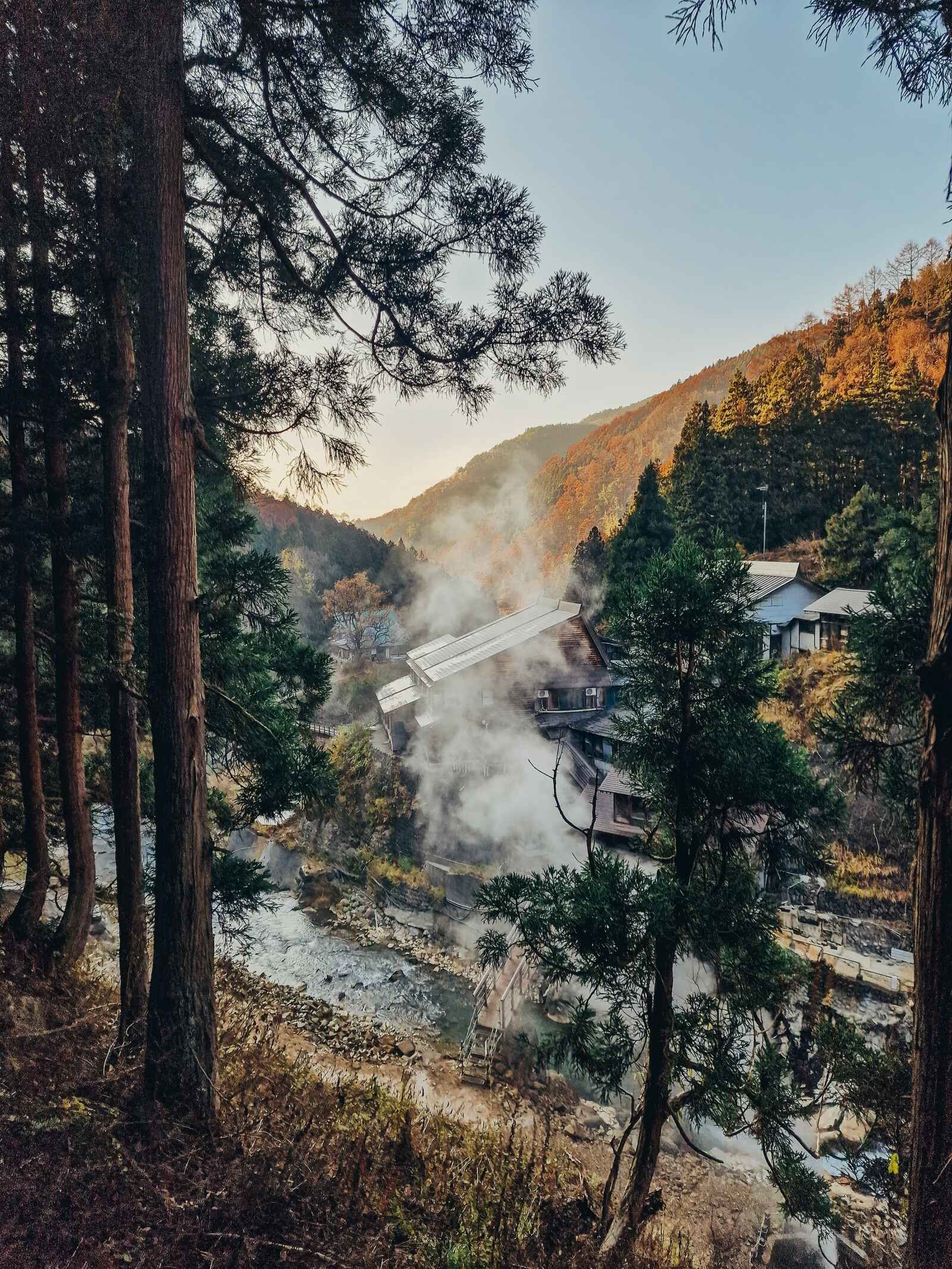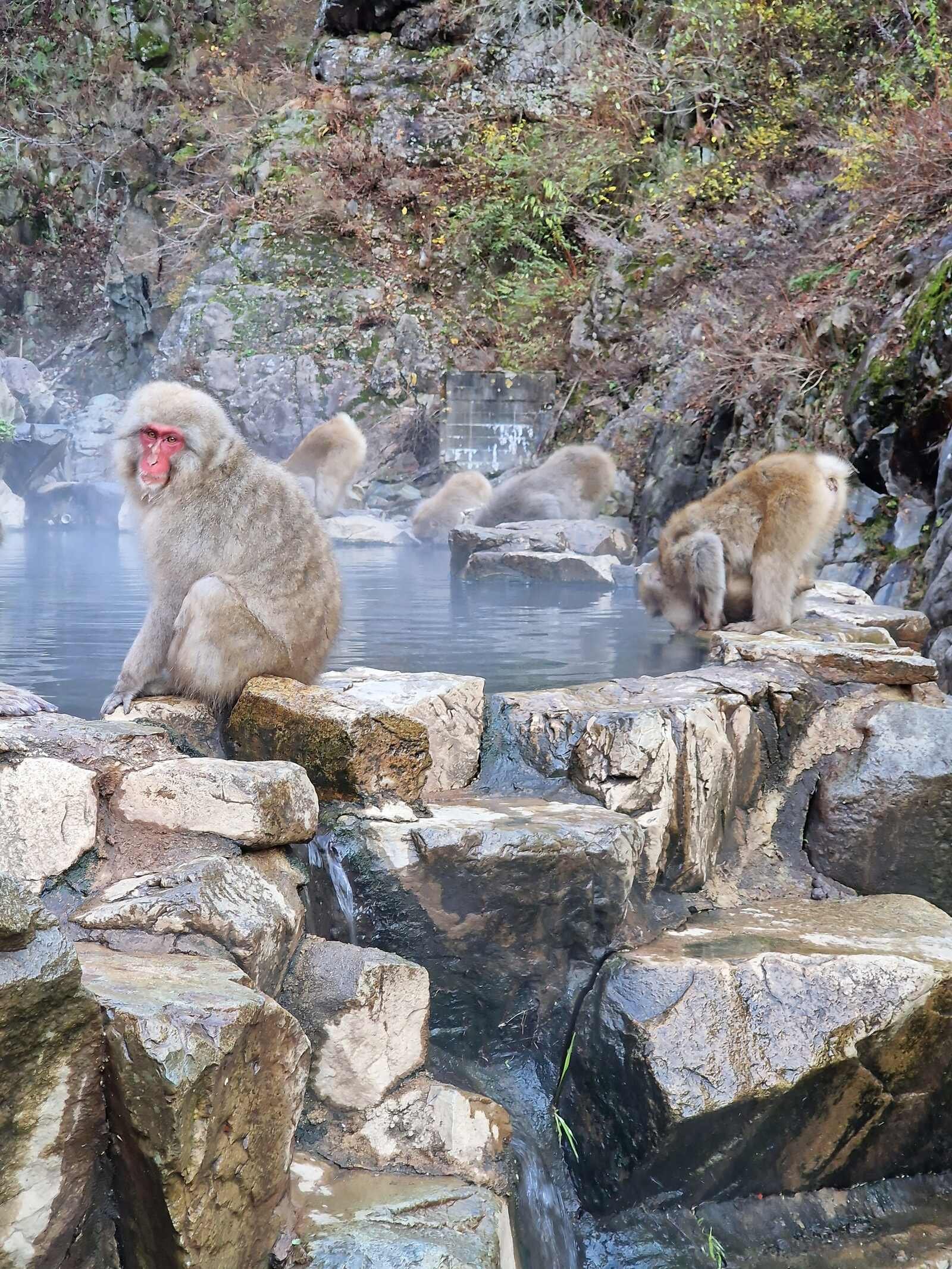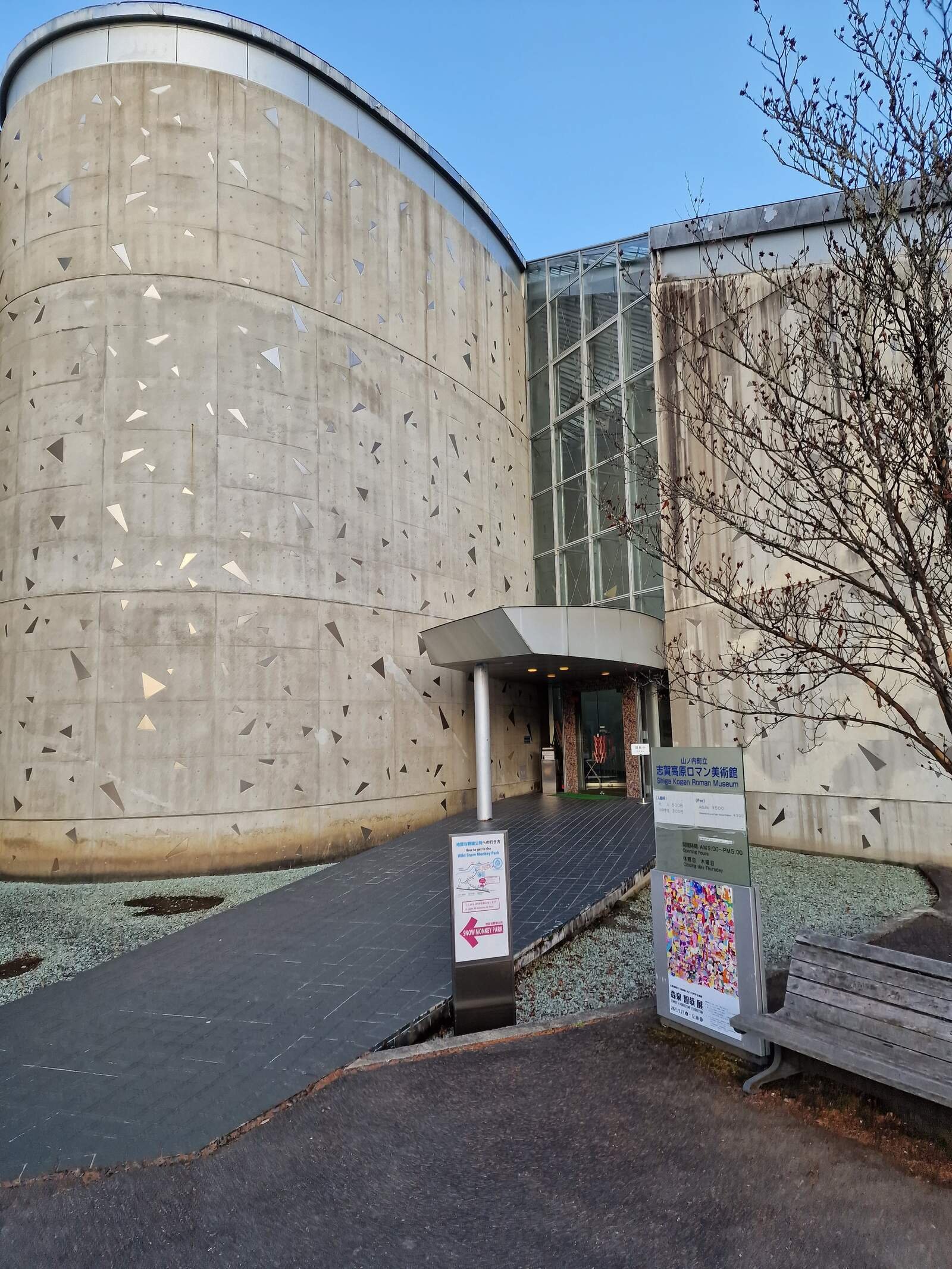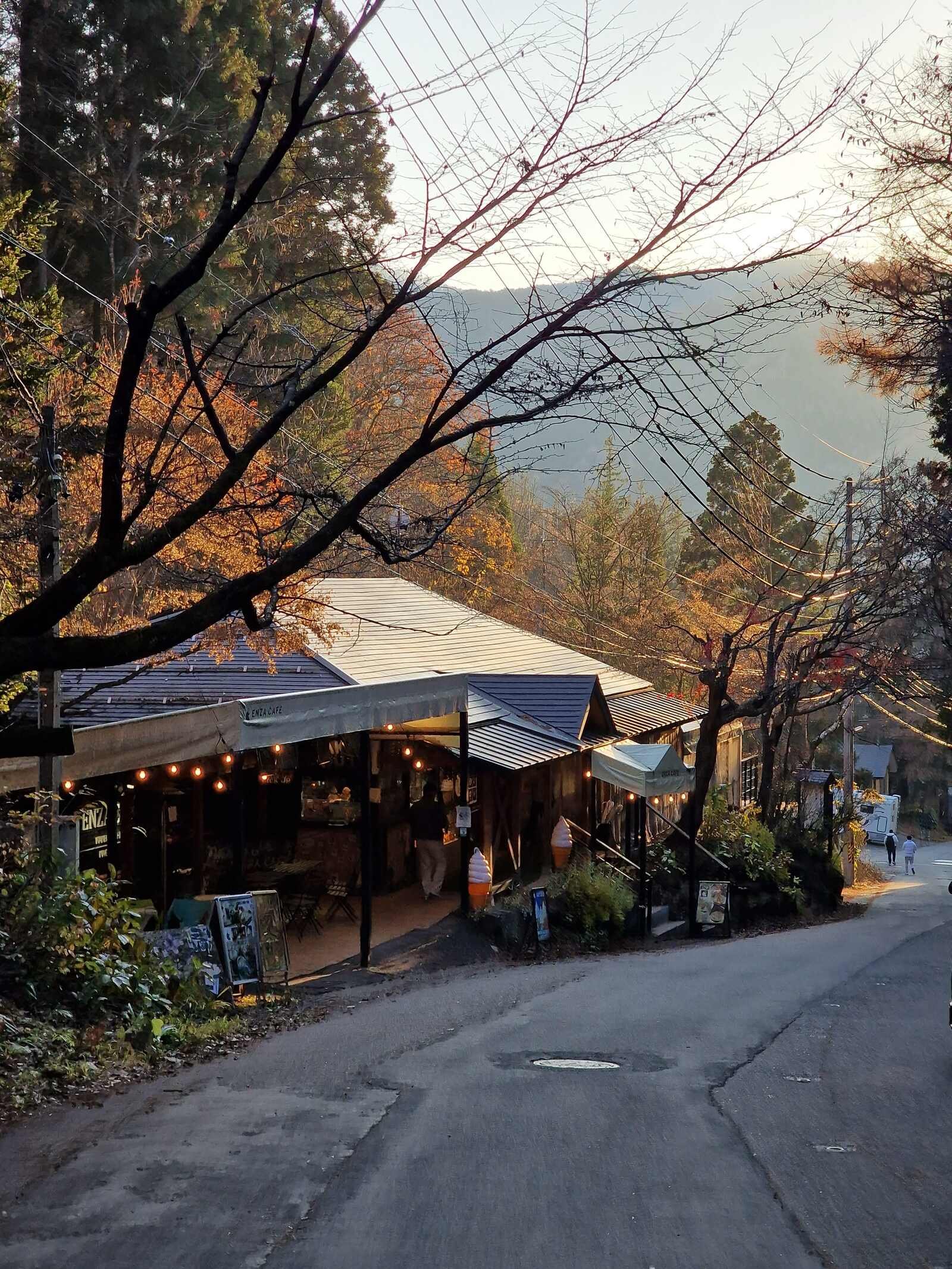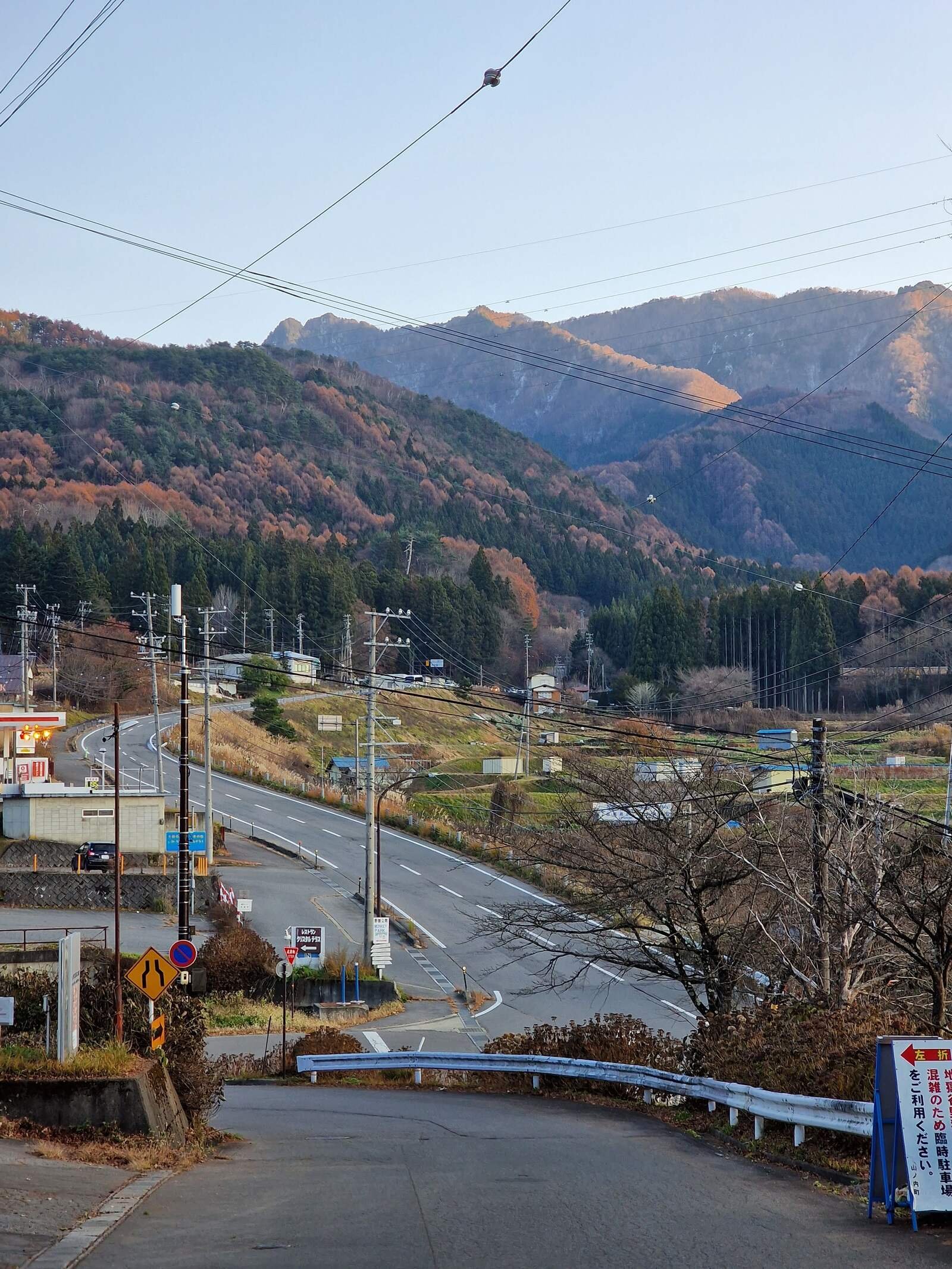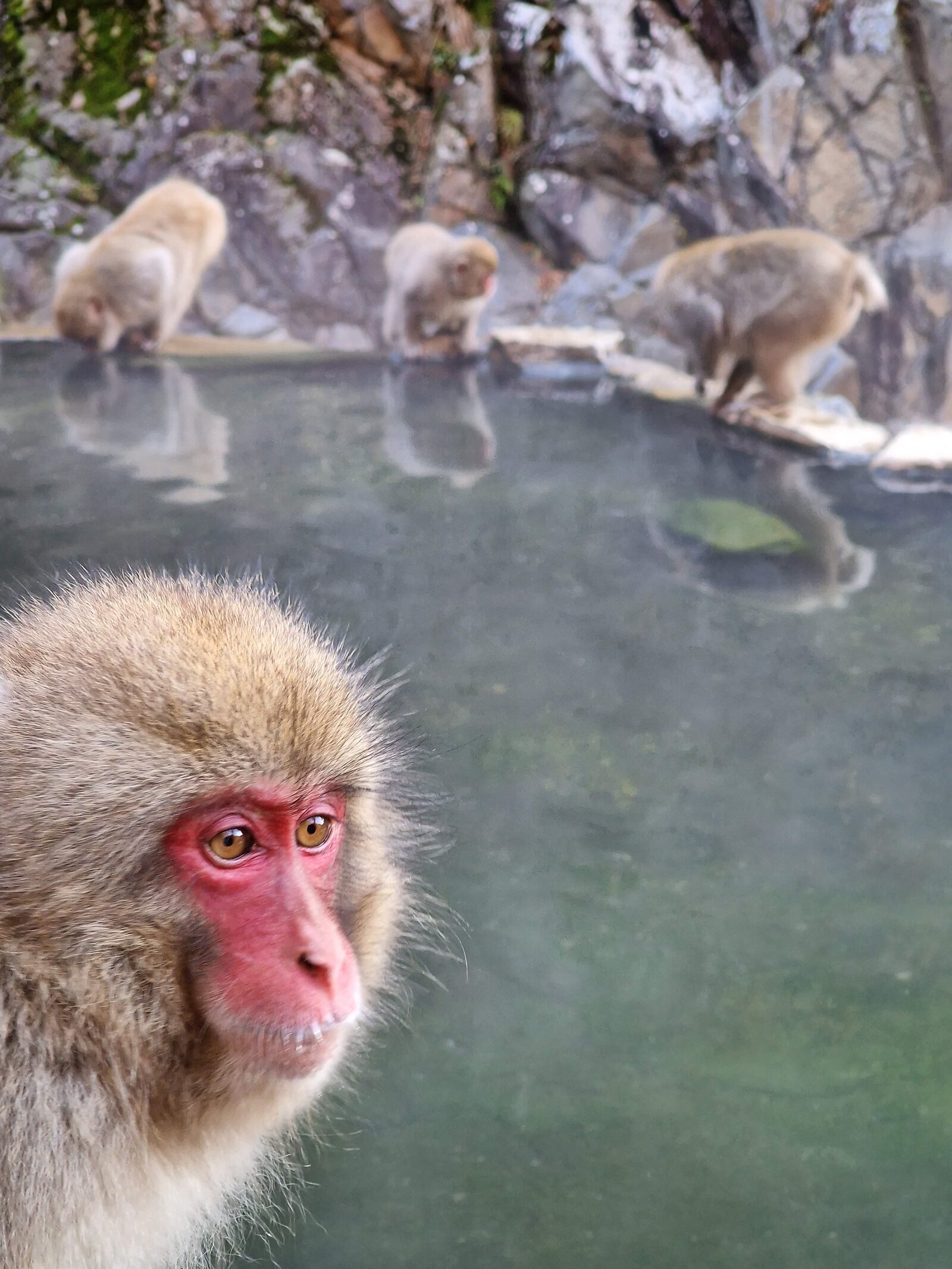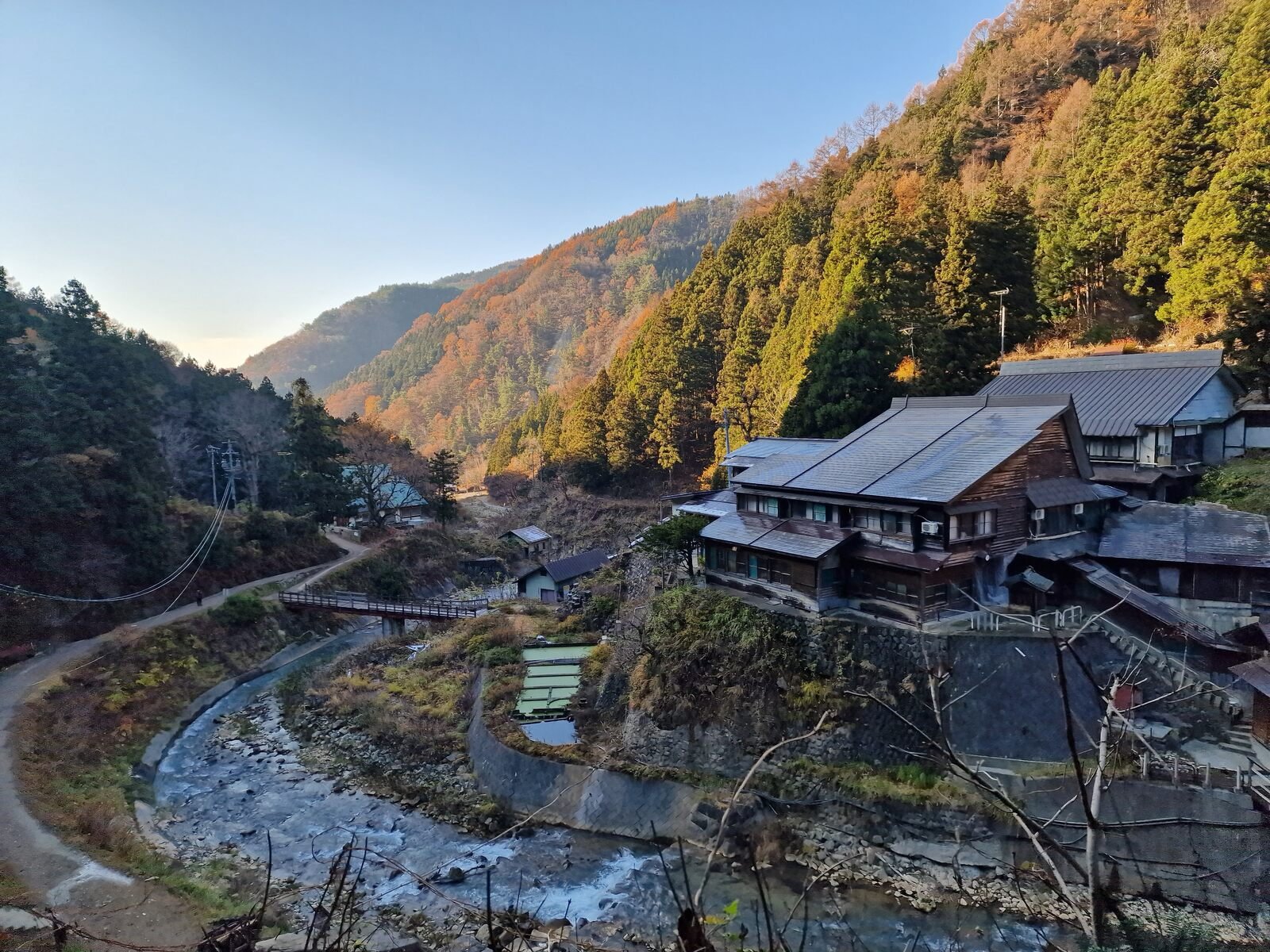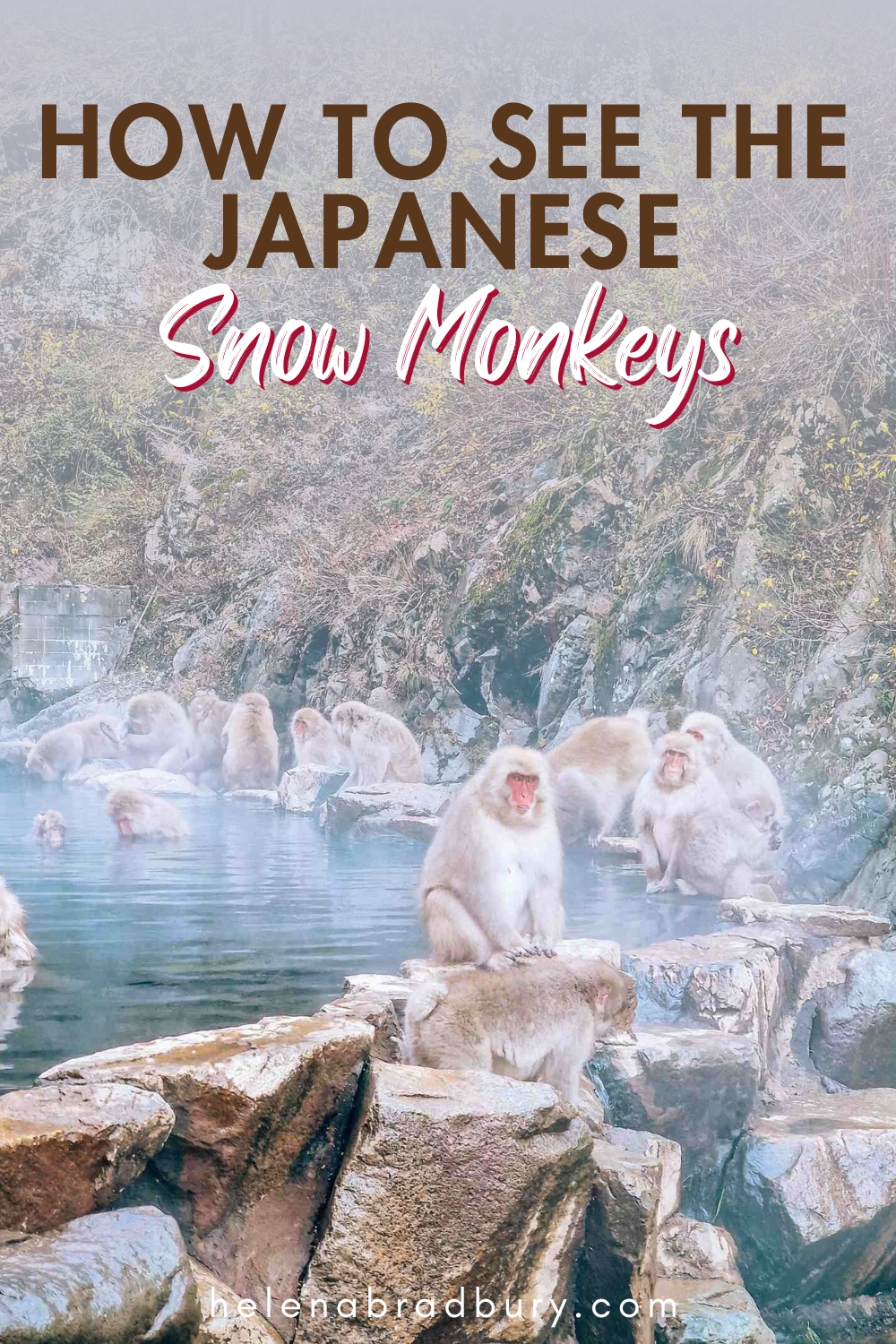This article has been updated in December 2025.
If you’re like me, maybe you saw pictures of the Japanese snow monkeys bathing in hot springs in a travel magazine years ago.
Or maybe you’ve seen viral reels on social media of the monkeys soaking in the onsen springs more recently.
Either way, this is probably the most famous group of monkeys in the world and seeing the snow monkeys in Japan is a bucket list item in Japan for many people. However winter season is not usually the most popular time for tourists to visit Japan.
So if you’re planning a visit to Japan during the famous spring cherry blossom season, or maybe during the autumn colours, here’s everything you need to know about seeing the Japanese snow monkeys in April - November and how to add the snow monkeys to your Japan itinerary.
The famous Japanese snow monkeys in Jigokundani Snow Monkey Park
Disclosure: This post may contain affiliate links, which means I may receive a commission if you click a link and purchase something. While clicking these links won't cost you anything, they will help me to keep this site up and running! Check out the full disclosure policy for more details. Thank you so much!
Where are the Snow Monkeys in Japan?
The Japan snow monkeys are located in the Jigokundani Snow Monkey Park close to Yamanochi in the Nagano Prefecture of Japan. Nagano Prefecture is in the Chūbu region, north of Tokyo, also known as the Japanese Alps.
The park (Jigokundani Yaen Koen) is open all year round and the Nagano snow monkeys can be seen bathing in the natural hot springs throughout the year, although they are most commonly seen in winter when they use the hot springs to warm up during the cold winter.
The park is the monkey’s natural habitat, both in the forests and the mountains in the area, not just the hot spring pools which are located in the Yamanouchi Valley.
On our walk through the Yamanouchi Valley
About Jigokudani Snow Monkey Park
Snow monkeys bathing
At an altitude of 850 metres above sea level, this mountainous region of Nagano prefecture is characterised by winters that last for around a third of the year.
Although winters can be challenging for humans, it’s the ideal environment for the snow monkeys who have lived in the park as their natural environment for centuries - well before the park was designated in 1964.
The park was set up to protect the monkeys and their natural environment in the valley of the Yokoyu RIver, allowing scientists to study them as well as tourists to enjoy seeing their unique behaviour as the only monkeys in the world to bathe in hot springs!
Jigokundani means Hell Valley, the name given to the valley due to the temperature of the water and the steam rising from the hot springs.
Steam rising from the ground in Jigkundani Snow Monkey Park aka Hell Valley
About Japanese snow monkeys
Although most well-known as snow monkeys, these monkeys are called Japanese Macaques and have lived in the mountains here for centuries.
It’s said that at one point they saw humans bathing in the hot springs and decided to try it for themselves. The rest is history. They found the springs to be the perfect antidote for keeping warm during the cold, heavy snowfall during winter months in the region.
The good news is that the monkeys come down to bathe in the hot springs all year round, however there isn’t snow all year. So if you want to see the snow monkeys bathing in the snow then you will need to visit in December - February.
During the warmer months, the Japanese monkeys are still by the hot springs or valley but they’re less likely to get into the hot water of the springs. Sometimes the park rangers will throw food to encourage them to go into the hot springs for visitors to see during this time.
Snow monkey hanging out on a rock next to the path
Japanese snow monkeys
The best time of year to see the Japanese snow monkeys
You can see the Japanese snow monkeys all year round.
However you will only see them bathing in the hot springs surrounded by snow during the winter months (December-February or March).
We visited in late autumn (November) and it was very cold but no snow and there were loads of monkeys in the hot springs.
The valley is their permanent home, so the monkeys are in the area all year round, but during the summer months, park staff are more likely to encourage them into the hot springs with food since they usually only go into the water to warm up during the cold winter months.
If you are not bothered about seeing them in the snowy season but would like to see the monkeys bathing, anytime late October - April is a good idea - basically the cooler weather encourages them into the water to warm up.
The main hot spring pool
How to get to Jigokudani Monkey Park
I need to caveat this by saying, however you choose to get there, you will arrive at the Jigokundani Snow Monkey Park bus stop/ parking lot and it is around 45 minutes walk through the forest to reach the visitors centre and the snow monkeys themselves.
We actually saw a family visiting the Snow Monkeys on a day trip from Tokyo and they had two prams with them and weren’t aware of the long walk through the forest until they arrived.
1. this is the museum where any bus you take will drop you off
4. you’ll follow a paved road initially for about 5-10 minutes (you’ll come across the map sign below)
2. start walking up this road (I’m standing on) this is looking back at the bus stop/main road you arrived on
5. The walk through the forest to the snow monkey park mostly looks like this
The trail itself is mostly flat and very doable but it was very muddy for us during the autumn. If you’re visiting after rain or light snow - expect mud. There is also a sort descent at the end to reach the visitors centre - there are steps and a ramp but it’s steep as you’re walking up the side of the valley.
Below I have included the Snow Monkey Park map to show you the route.
Red circle = the bus stop drop off (you will always be dropped off here no matter how to choose to get to the Snow Monkey Park)
Red line = shows the walking route to the snow monkey hot springs
By this point we had already walked from the bus stop for around 5 minutes so I would guess the total route is 2.5km.
Red circle = the bus stop drop off (you will always be dropped off here no matter how to choose to get to the Snow Monkey Park)
Red line = shows the walking route to the snow monkey hot springs
Below are the methods of getting to the snow monkey park, there are several bus options which is the easiest way to get there.
How to reach the Snow Monkey Park by train
This is how to visit the snow monkeys from Nagano.
We chose to stay in Nagano City and most people do (or nearby) if they’re visiting the snow monkeys and seeing the surrounding area.
But even if you choose to visit the snow monkeys on a day trip from Tokyo, you will still come from Nagano as the way to get here from Tokyo is on the Tokyo-Nagano Shinkansen (bullet train) from Tokyo Station. If you have a Japan Rail Pass you can use it on this route and the Limited Express from Nagano.
From Nagano Station, take the Limited Express Nagano-Dentetsu Line and ride 5 stops to Yudanaka Station. Yudanaka Station is the closest station to the Snow Monkey Park and this train takes 45 minutes.
Then from the bus station outside Yudanaka Station, take the number 20 bus bound for Snow Monkey Park. Ride for 10 stops (about 10 minutes) You’ll know you’re at the snow monkey bus stop because the bus pulls off the road into a small car park/turning area with a museum in it (the parking lot is called Jigokundanionsen Rinji Parking Lot” on Google Maps)
The Limited Express ticket from Nagano to Yudanaka costs 1,590 yen. The bus ticket costs 300 yen (make sure you have change for this one and for the return trip!)
The Limited Express train departs Nagano a couple of times per hour and and the buses from Yudanaka Station depart regularly.
Nagano City
The Snow Monkey Express Bus
If you don’t want to deal with the train/bus changes or like us, you’re short on time, there is a Snow Monkey Express bus from Nagano Station which takes you directly to the Snow Monkey Park.
A one-way journey costs 1,800 yen and takes you directly from Nagano bus station (situated behind the Nagano train station) to the Snow Monkey bus stop.
Take the Nagano Station East Exit and look for bus stop number 23.
As we were short on time and the local trains were not as frequent, we opted for this option, which is 200 yen more expensive each way - so not really much difference if you’re coming from Nagano!
By local bus
If you’re staying in Yudanaka then the local bus from the bus station (mentioned above) is still your best option at just 300 yen a ticket.
It departs from Yudanaka station every 10 minutes.
By taxi
A big warning that Japanese taxis are notoriously expensive, however I appreciate it might be an easier option for some.
The journey from Yudanaka station is around 15 minutes so I would recommend staying in Yudanaka or getting yourself there for the cheapest taxi ride.
Generally Uber is only available in Japan in bigger cities.
By tour
If you’re looking for snow monkey park tour options, there are a few options available.
This snow monkey day trip from Nagano is the most popular option and also includes a visit to Zenkoji Temple in Nagano city.
If you’re coming from Tokyo, then this snow monkey park day trip from Tokyo is your best option.
If you’re planning to see the Japanese snow monkeys in spring on a visit to see the cherry blossoms, this snow monkey park tour also includes a cherry blossom tour.
And if you’re visiting in winter and you’re eager to see the snow monkeys bathing and surrounded by snow, you can also have some snow fun yourself with this snow monkey winter tour option which includes snow activities too.
How much is the Jigokudani Snow Monkey Park entrance fee?
An adult ticket to the Snow Monkey Park costs 800 yen (£4.30 / $5.43 USD)
A child ticket to the Snow Monkey Park costs 400 yen (£2.15 / $2.72 USD)
Fluffy snow monkey
What are the Snow Monkey Park opening times?
The snow monkey park has seasonal opening times but these can vary depending on how late/early the seasons are. Check the official website for details.
Generally in the winter months (November to March) the opening hours are shorter - 9am-4pm. Make sure you allow plenty of time to do the 45 minute walk from the snow monkey bus stop to the park itself and remember it gets darker much earlier in the winter.
Summer opening hours are 8.30am-5pm.
What to expect at the Snow Monkey Park?
You might be surprised by the low cost of the entrance fee, but the actual park area that’s available for tourists to access is quite small.
After you have followed the trail into the forest, there is a small information centre and ticket office where you buy your ticket and follow the short path down to the hot springs. There is some information in the information centre, although we found most of it was in Japanese.
There is one main man-made hot spring pool, with smaller ones alongside the riverbed.
On the short path to the hot springs you’ll probably come across some of the monkeys. They roam freely in the area and are very accustomed to people, although thankfully we noted they were much better behaved than monkeys we had come across in places like Thailand and Vietnam and did not try to approach us or grab water bottles or belongings!
Monkey on the trail as we approached the hot springs
Monkeys are very relaxed around humans
Of course you should never approach or try to pet the snow monkeys, they are still wild monkeys. There are park staff members to monitor the monkeys and any humans getting too close.
If you are intrigued by what they feel like (they look so fluffy!!) there’s actually a snow monkey pelt you can touch in the visitors centre.
Can you see the Japanese snow monkeys in April?
The short answer is yes, it is possible.
But there won’t be any snow and they might not be in the hot springs as much as the weather is warmer.
However if you have an unseasonably chilly day on your visit in March or April, it’s likely they’ll be in the water.
The park staff do also try to encourage them into the hot springs (by throwing food etc) in the spring and summer so that visitors can see them in the hot springs for a short while.
I visited in late November and although there had been snow recently, it only remained on the higher ground and shaded areas, but even without the snow, it was still incredible to see them bathing and the steam rising off the hot springs.
steamy hot springs for the Japanese snow monkeys in winter
Can you swim in the hot spring baths with the snow monkeys?
No. The hot springs are now for the monkeys only.
However if you’re interested in seeing the monkeys more and spending longer in the park, we did spot a traditional hotel in the valley with a hot spring outside that people were using.
The guesthouse in the valley as you approach the snow monkey park
Looking for where to stay near the Snow Monkey Park?
The Snow Monkey live camera view
Wondering how many snow monkeys are around right now? Or maybe how snowy it is in the park before your trip.
If you visit the official website for the Jigokundani Snow Monkey Park, you can see two live cameras of the snow monkeys all year round!
Summary: visiting the Snow Monkey Park in April
Hopefully this guide has not only given you the information you need to plan your trip to see the snow monkeys in Japan but has also reassured you that it is possible to see the Japanese snow monkeys in April - even if it’s without the snow!
Seeing the snow monkeys in Japan really was a once-in-a-lifetime experience for me and I hope it is for you too! It’s a popular destination for a reason and it’s well worth spending some time in the Nagano area too.
Pin for later to plan your trip
